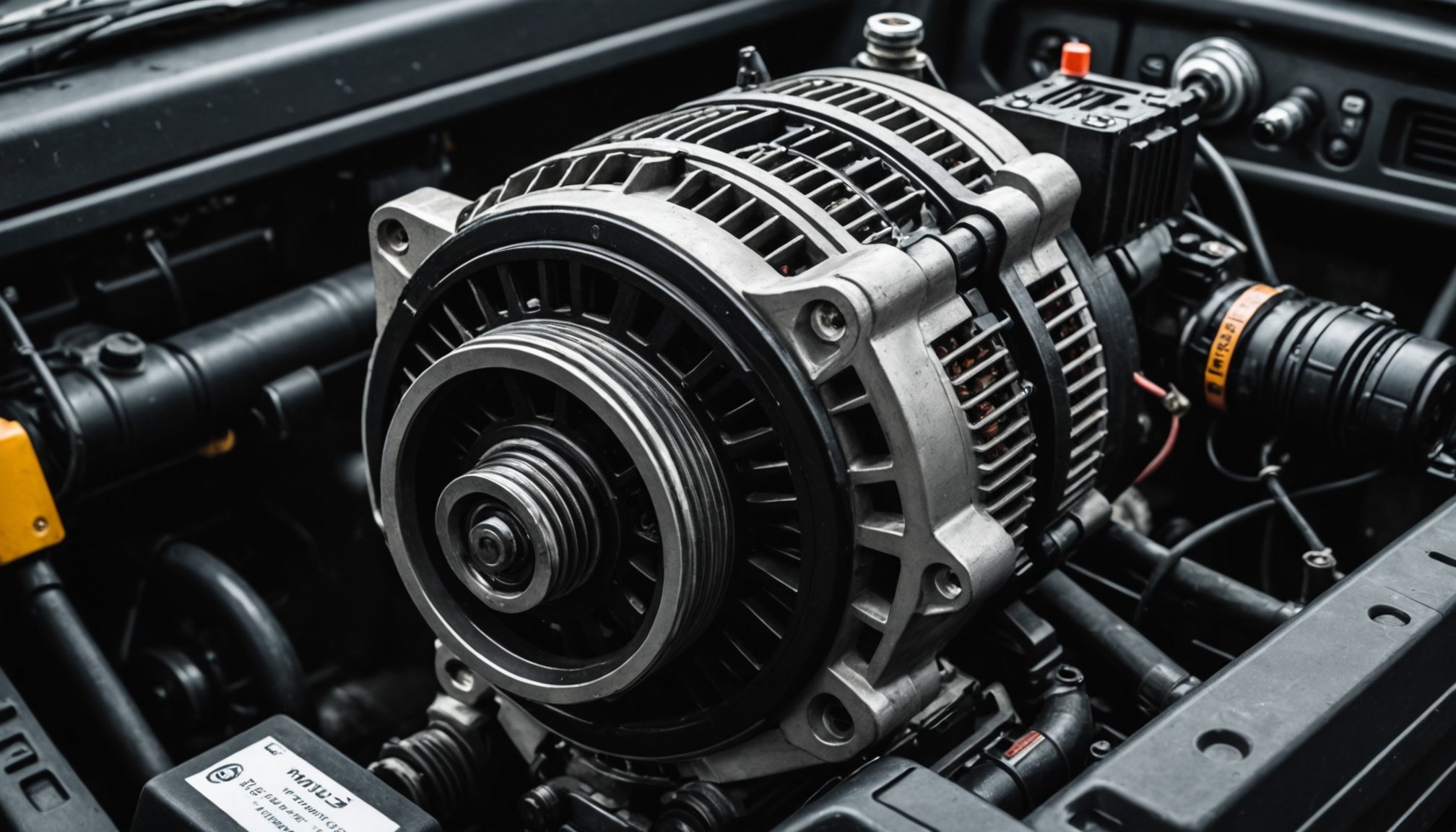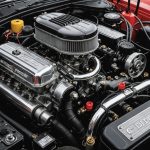Top Symptoms Indicating Alternator Issues in British Commercial Vans
When it comes to maintaining your British commercial van, one of the critical components to keep an eye on is the alternator. This vital part of your vehicle’s electrical system is responsible for charging the battery and powering the various electrical components. Here’s a comprehensive guide to help you identify and address alternator issues before they become major problems.
Understanding the Alternator’s Role
Before diving into the symptoms, it’s essential to understand what the alternator does. The alternator is a crucial component that converts mechanical energy into electrical energy, which is then used to charge the car battery and power the electrical systems of your vehicle. It works in tandem with the battery, voltage regulator, and other electrical components to ensure your van runs smoothly.
Also to see : Top Strategies for Prolonging the Life of Your Hybrid Vehicle Battery in the UK
Common Symptoms of Alternator Issues
Identifying alternator problems early can save you a lot of trouble and expense in the long run. Here are some common symptoms to look out for:
Dim or Flickering Lights
One of the earliest signs of an alternator issue is dim or flickering headlights and interior lights. If you notice that your lights are not as bright as they used to be or if they flicker while the engine is running, it could be a sign that your alternator is not producing enough power.
Also to discover : Top Strategies for Prolonging the Life of Your Hybrid Vehicle Battery in the UK
Battery Not Charging
A failing alternator often fails to charge the car battery properly. If your battery is draining quickly or not holding a charge, it might be due to an alternator problem. You may notice that your van takes longer to start or that the battery warning light is illuminated on your dashboard.
Warning Lights on the Dashboard
Modern vehicles are equipped with various warning lights that can indicate issues with different components. If the charging warning light or the battery warning light comes on, it could be a sign of alternator failure. These lights are designed to alert you to potential problems before they become severe.
Unusual Noises
A bad alternator can produce unusual noises such as whining, grinding, or squealing sounds. These noises are often due to worn-out bearings or a slipping drive belt. If you hear any unusual sounds coming from the alternator area, it’s a good idea to have it checked by a mechanic.
Electrical System Malfunctions
The alternator powers various electrical systems in your van, including the radio, wipers, and other accessories. If these systems start to malfunction or behave erratically, it could be a sign of an alternator issue. For example, if your radio cuts out intermittently or your wipers stop working, it might be related to a failing alternator.
Detailed List of Symptoms
Here is a detailed list of symptoms that could indicate alternator problems:
- Dim or flickering headlights and interior lights
- Battery not charging or draining quickly
- Warning lights on the dashboard (charging or battery warning light)
- Unusual noises (whining, grinding, or squealing sounds)
- Electrical system malfunctions (radio, wipers, etc.)
- Slow engine crank
- Overheating alternator
- Belt slippage or wear
How to Test Your Alternator
If you suspect that your alternator is failing, here are some steps you can take to test it:
Visual Inspection
Start by performing a visual inspection of the alternator and its components. Look for signs of wear on the drive belt, corrosion on the terminals, or any other visible damage.
Voltage Test
Use a multimeter to check the voltage output of the alternator. With the engine running, the voltage should be between 13.5 and 14.5 volts. If the voltage is lower than this range, it could indicate an alternator problem.
Load Test
A load test can help determine if the alternator is producing enough power under load. This test can be performed by a professional mechanic using specialized equipment.
Table: Comparing Alternator Issues with Other Common Problems
| Symptom | Alternator Issue | Battery Issue | Engine Management Light (EML) |
|---|---|---|---|
| Dim Lights | Yes, due to low voltage output | Yes, if battery is weak | No, unless related to electrical system |
| Battery Not Charging | Yes, alternator not charging battery | No, but could be related to battery age | No, unless related to electrical system |
| Warning Lights | Yes, charging or battery warning light | Yes, battery warning light | Yes, EML for various engine-related issues |
| Unusual Noises | Yes, whining or grinding sounds | No | No |
| Electrical System Malfunctions | Yes, due to low voltage output | Yes, if battery is weak | Yes, if related to electrical system |
Practical Advice and Next Steps
If you identify any of the symptoms mentioned above, here are some practical steps you can take:
Consult a Mechanic
If you are unsure about how to diagnose or fix the issue, it is always best to consult a professional mechanic. They can perform a thorough diagnostic check and provide the necessary repairs.
Replace the Alternator
If the alternator is found to be faulty, replacing it is usually the best option. Make sure to purchase a high-quality alternator that is compatible with your vehicle.
Maintain Your Vehicle Regularly
Regular maintenance can help prevent alternator issues. Ensure that your vehicle’s timing belt is in good condition, as a broken timing belt can cause significant damage to the engine and other components.
Keep an Eye on Your Battery
A healthy battery is crucial for the proper functioning of the alternator. Ensure that your car battery is in good condition and replace it if necessary.
Quotes and Insights from Experts
- “A failing alternator can cause a range of problems, from dim lights to complete electrical system failures. It’s crucial to address these issues promptly to avoid more severe problems down the line,” says John Smith, a veteran mechanic.
- “Regular maintenance is key to preventing alternator issues. A simple visual inspection and voltage test can go a long way in identifying potential problems early,” advises Jane Doe, an automotive expert.
Identifying and addressing alternator issues in your British commercial van is crucial for maintaining its performance and longevity. By being aware of the common symptoms and taking the necessary steps to diagnose and repair the problem, you can ensure your vehicle runs smoothly and efficiently. Remember, a well-maintained alternator is essential for the overall health of your vehicle’s electrical systems.
In conclusion, if you notice any of the signs mentioned above, do not hesitate to take action. Whether it’s a dim light, a warning light on the dashboard, or an unusual noise, these symptoms are your vehicle’s way of telling you that something is wrong. By acting promptly and seeking professional help when needed, you can keep your van in top condition and avoid costly repairs down the road.











